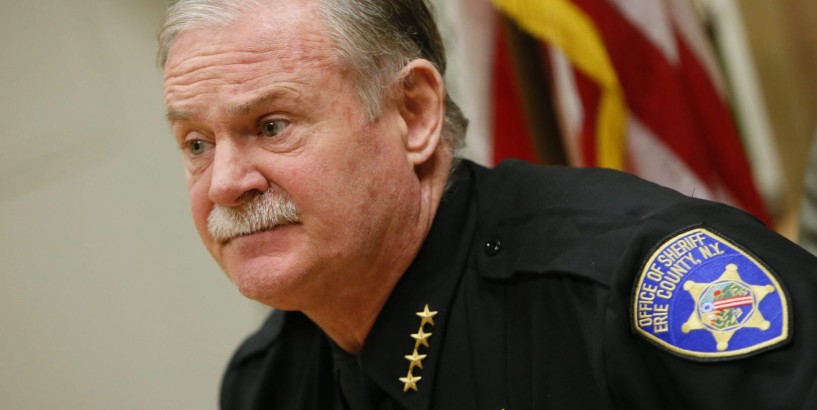With Erie County Sheriff Timothy Howard showing about zero interest in equipping his deputies with body cameras, it’s a useful moment to note the milestone just reached by the New York City Police Department: It announced last week that 20,000 of its cops have been outfitted with the cameras, with more to come.
A question: If the nation’s largest police force can find a way to do this, why can’t the Erie County Sheriff’s Office? Given Howard’s chronic mismanagement of a troubled operation, it’s fair to wonder if the reason isn’t that he’s afraid of what the cameras might reveal. County residents have seen some of that already.
This, after all, is an office that has drawn the sharp criticism of a state office overseeing it, the Commission of Correction. It found that deputies were misreporting suicide attempts as mere disturbances in official reports and that, in one case, ruled that deputies were responsible for the death of an inmate and had misreported those circumstances, as well. A special prosecutor, who conducted a dubious investigation and then waited until after the most recent sheriff’s election to file her report, found no cause to file criminal charges.
It’s also the office in which a video recording revealed that a deputy, Kenneth Achtyl, had attacked a fan at a Buffalo Bills game, breaking the man’s nose. Achtyl is under criminal investigation but has drawn no internal discipline.
Such incidents document the urgent need for Erie County sheriff’s deputies to be outfitted with body cameras. Indeed, it was a deputy’s body camera, worn during a test period, that recorded part of Achtyl’s assault of Nicholas H. Belsito.
Unless someone wants to argue that it’s somehow useful to have armed and reckless law enforcement officers on the streets – endangering citizens, colleagues and taxpayers – the camera accomplished its goal. Together with other video, it gave a clear view of what happened.
It works the other way, too. Body cameras can also clear an officer falsely accused of abuse or other misconduct. That has already occurred in the City of Tonawanda, police there say. Surely Howard and his deputies would appreciate access to that kind of evidence, saving time, money and, for the deputy accused, what may be months of worry.
Against all of this, in the few comments he has made, Howard cites only cost, which is surely legitimate. More than the cameras, themselves, the cost of uploading and storing video is expensive. Yet, Buffalo Police are finding a way. The city approved the purchase of 550 cameras in December. Other Western New York police departments are also on board.
But the Erie County Sheriff’s Office, which is in obvious, dire need of the cameras, continues to dawdle. It’s managerial malpractice. Well-run departments around the country are finding ways to adopt this technology. At some point, it’s likely to become standard issue, so useful is it to the cause of professional policing.
This can be done. Local departments are proving it, as is the country’s largest police force. If Howard won’t move on this, County Executive Mark C. Poloncarz and the County Legislature need to turn up the pressure. If Howard can’t be persuaded, maybe they can help turn around an office whose reputation is failing.









